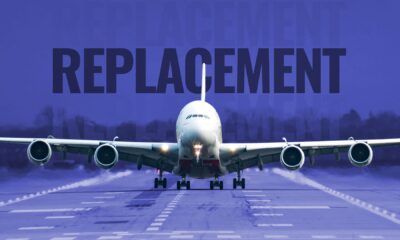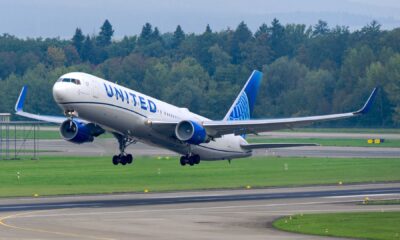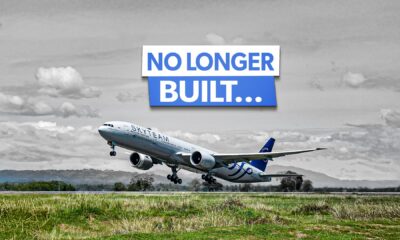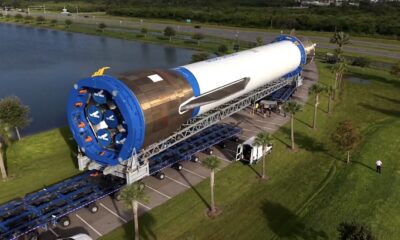World
Lockheed Martin’s X-59 Could Redefine Supersonic Flight
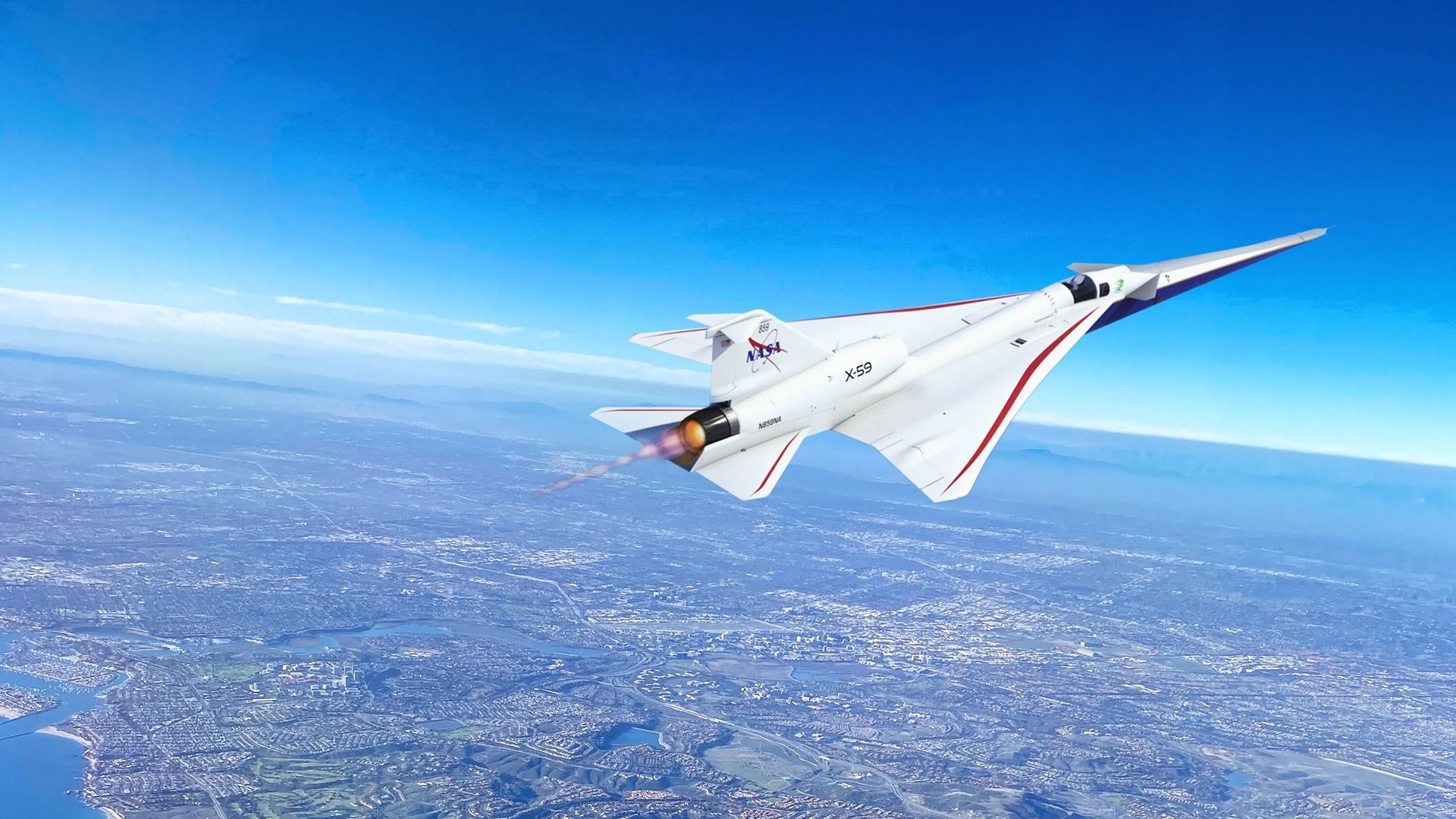
Lockheed Martin is nearing the completion of the X-59 Quesst, a groundbreaking supersonic aircraft developed for NASA. Unlike traditional supersonic jets that prioritize speed, the X-59 focuses on noise reduction, aiming to transform the disruptive sonic boom into a more acceptable sonic “thump.” The implications of this technology could significantly impact the aviation industry, particularly for established manufacturers like Boeing.
Understanding the X-59 Quesst
The X-59 is a single-pilot experimental aircraft designed by Lockheed Martin’s Skunk Works for NASA’s Quiet SuperSonic Technology (Quesst) mission. This mission seeks to explore advancements in quiet supersonic flight, enabling the X-59 to fly at speeds of Mach 1.42 while minimizing noise pollution for those on the ground. With a length of approximately 100 feet (30.4 meters) and a wingspan of about 29.5 feet (9 meters), the X-59 has a maximum takeoff weight of 14.7 tonnes. It is powered by a single General Electric F414 engine, which features afterburning capability.
Currently undergoing ground testing, the X-59 completed its initial self-powered taxi test in July 2025, followed by successful maximum afterburner engine runs. These tests confirm that the engine can produce the necessary thrust for supersonic flight while integrating seamlessly with the aircraft’s systems. Following the ground tests, NASA plans to conduct flight tests over populated areas to assess public response to the aircraft’s sonic “thumps.”
The Significance of Noise Reduction
The X-59’s development addresses a significant barrier to supersonic flight: the sonic boom, which produces noise levels between 110 and 135 decibels, comparable to a chainsaw. By utilizing an elongated and sharply tapered nose, along with canards and a carefully contoured fuselage, the design aims to spread shockwaves generated during supersonic flight. This innovative approach could lead to a much quieter noise profile, similar to the sound of a car door closing.
To support community testing, the X-59 is equipped with sensors and microphones to gather extensive acoustic, aerodynamic, and environmental data. This data will be crucial in persuading regulators to reconsider existing bans on supersonic flights over land. If successful in demonstrating acceptable noise levels, the X-59 program could pave the way for new regulations, potentially allowing supersonic flights to resume over populated areas.
Boeing has a vested interest in the outcomes of this project. Historically, the company designed its 747 to serve as a cargo aircraft, anticipating that supersonic transports would eventually replace subsonic airliners. The failure of the Concorde and other supersonic models, largely attributed to bans on overland flights, has kept supersonic travel from becoming mainstream. The results of the X-59 could lead to a new generation of supersonic airliners that can legally fly above the speed of sound over land, posing a direct threat to Boeing and its competitor Airbus.
As the aviation industry evolves, the X-59 represents a pivotal moment. Its potential to enable supersonic flights over land could disrupt the current duopoly held by Boeing and Airbus, especially given Boeing’s ongoing financial struggles. With billions in losses and challenges in certifying new aircraft models, the company finds itself at a crossroads.
Potential Impact on the Aviation Landscape
The emergence of new players in the supersonic market could alter the competitive landscape significantly. If manufacturers can develop supersonic airliners with lower operating costs that can compete with subsonic models, it would drastically shift the dynamics of the industry. The current situation is reminiscent of the late 1950s when advancements in technology rendered jetliners more efficient and versatile than their propeller-driven counterparts.
Currently, the Boom Overture stands as the most serious contender in the supersonic transport space. This aircraft is designed to operate exclusively over water routes, producing a loud sonic boom and circumventing the challenges associated with overland supersonic flight. However, if the X-59 proves that quiet supersonic travel is feasible, the Overture could face significant market limitations.
Boom has developed a concept called “Boomless Cruise,” which claims that its Symphony engine can allow the Overture to cruise over land without an audible sonic boom under specific conditions. This approach may provide a temporary solution, yet it highlights the potential vulnerability of Boom’s strategy if the X-59 program validates the possibility of quiet supersonic flight.
The Lockheed Martin X-59 Quesst is one of the most critical experimental aircraft programs of the 21st century, and its findings could usher in a new era of supersonic travel. If successful, it could ultimately enable airliners to operate at supersonic speeds without the disruptive noise that has historically hampered this segment of aviation. As the world watches, Boeing may find itself at a disadvantage in responding to these emerging technologies, while Boom must reconsider its approach in light of the X-59’s potential to reshape the aviation market.
-

 World3 months ago
World3 months agoScientists Unearth Ancient Antarctic Ice to Unlock Climate Secrets
-

 Entertainment3 months ago
Entertainment3 months agoTrump and McCormick to Announce $70 Billion Energy Investments
-

 Science3 months ago
Science3 months agoFour Astronauts Return to Earth After International Space Station Mission
-

 Lifestyle3 months ago
Lifestyle3 months agoTransLink Launches Food Truck Program to Boost Revenue in Vancouver
-

 Technology2 months ago
Technology2 months agoApple Notes Enhances Functionality with Markdown Support in macOS 26
-

 Top Stories7 days ago
Top Stories7 days agoUrgent Update: Fatal Crash on Highway 99 Claims Life of Pitt Meadows Man
-

 Sports3 months ago
Sports3 months agoSearch Underway for Missing Hunter Amid Hokkaido Bear Emergency
-

 Politics2 months ago
Politics2 months agoUkrainian Tennis Star Elina Svitolina Faces Death Threats Online
-

 Technology3 months ago
Technology3 months agoFrosthaven Launches Early Access on July 31, 2025
-

 Politics3 months ago
Politics3 months agoCarney Engages First Nations Leaders at Development Law Summit
-

 Entertainment3 months ago
Entertainment3 months agoCalgary Theatre Troupe Revives Magic at Winnipeg Fringe Festival
-

 Politics1 week ago
Politics1 week agoShutdown Reflects Democratic Struggles Amid Economic Concerns

